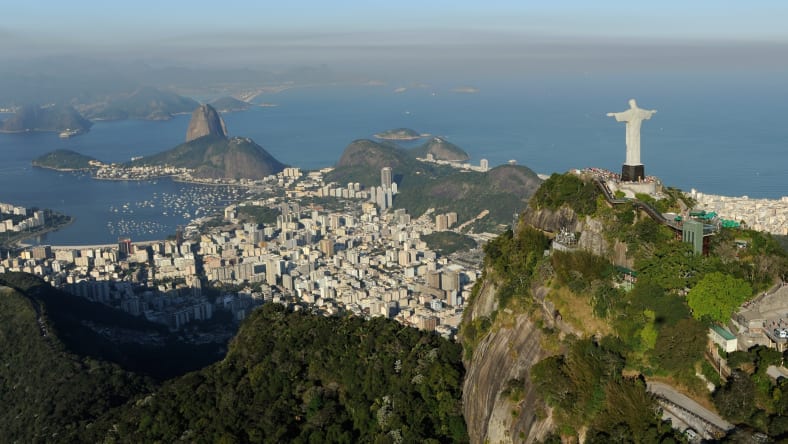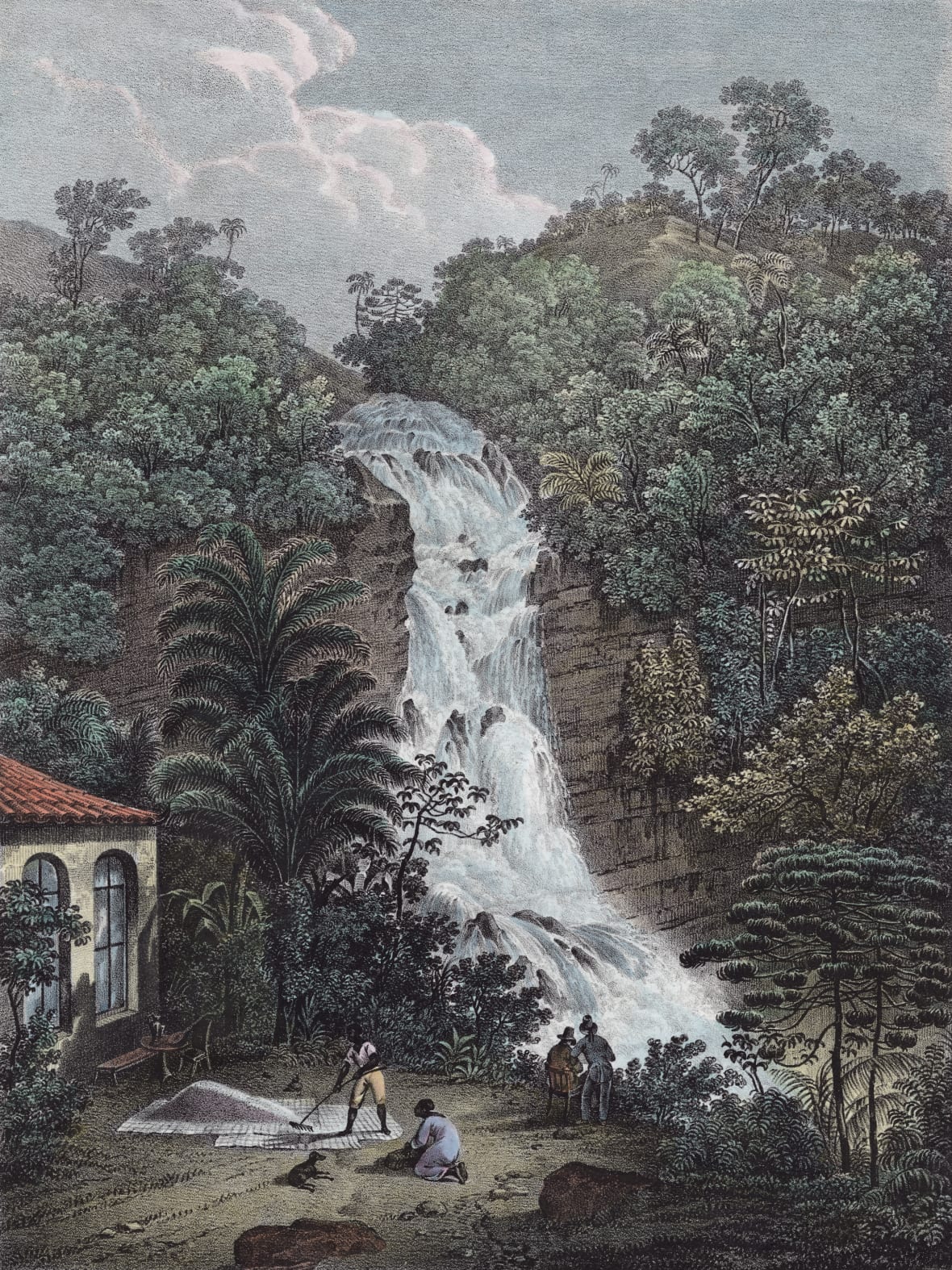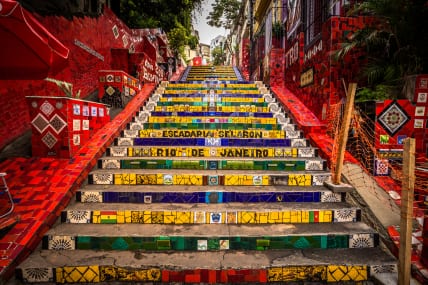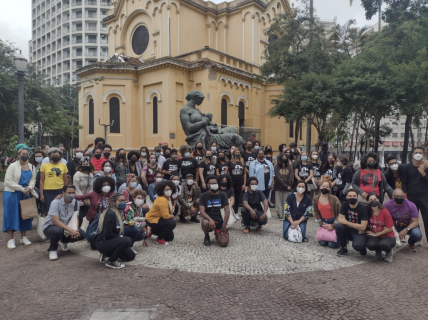
Editor’s note: The following article is an op-ed, and the views expressed are the author’s own. Read more opinions on theGrio.
Aldison Almeida’s ancestry is strongly connected to the preservation of land.
Almeida is a leader of a Black community in Rio de Janeiro that borders a protected forest and state park. His work to protect his Camorim Quilombo community involves preserving and promoting Black Brazilian culture and periodically replanting the forest that has sustained and protected the community for hundreds of years.
He does this work in honor of his ancestors.
Twenty years ago, his father recounted a true story about Rio de Janeiro’s Tijuca National Park that few people know. In the 1860s, six enslaved Black Brazilians — Eleuterio, Constantino, Manuel, Mateus, Leopoldo, and Maria — saved the Tijuca forest from complete deforestation. Over 13 years, they planted more than 100,000 seedlings, preserving the forest.
When Almeida heard this story, he immediately felt an ancestral connection to these unheralded Black Brazilians.
“Everyone should know their names,” said Almeida. “But there is little written about them. There’s not even a placard with their names in the forest.”
 A colored lithograph by Karl Joseph Brodtmann of the Tijuca forest waterfall in the Tijuca National Park, Rio de Janeiro, circa 1830s. Tourists are sketching the view while locals work nearby. (Photo by Hulton Archive/Getty Images)
A colored lithograph by Karl Joseph Brodtmann of the Tijuca forest waterfall in the Tijuca National Park, Rio de Janeiro, circa 1830s. Tourists are sketching the view while locals work nearby. (Photo by Hulton Archive/Getty Images)Rio’s lush mountains would be barren without their work, and hundreds of thousands of people would have gone without drinking water in the late 19th century. The city now houses the largest urban forest in the world, creating a spectacular landscape. More than 246 kilometers of beaches wrap along an edge that spills into the Atlantic Ocean. The Sugarloaf Mountain juts out of the earth at one corner, creating one of its most recognizable landmarks. And in the middle of the city, the Christ the Redeemer statue of Jesus rises out of a 39.58 square kilometers tropical forest — the Tijuca forest. Within 20 minutes, one can go from a densely populated beach neighborhood to a thick, lush forest with multiple waterfalls.
Rio de Janeiro wouldn’t be Rio without Eleuterio, Constantino, Manuel, Mateus, Leopoldo and Maria.
Around the mid-19th century, Rio de Janeiro faced a water crisis brought on by coffee plantations that had ravaged the Atlantic rainforest. Back then, the harsh plantations (manned by enslaved Blacks) lasted only 20 years, and the hillsides were left barren when deserted. Rio de Janeiro inhabitants sourced water from springs that flowed down the mountains to the city. Without the trees, the city collected very little water. In a desperate measure, Rio’s government decided to reclaim the forest in the 1850s by the regular replanting of trees.
Under the leadership of Manuel Gomes Archer, a white government official, five Black men, and one Black woman, assisted in planting more of the seedlings that now make up the Tijuca forest. Archer left behind detailed diaries of his work and, in a rare act for the times, he included the names of the enslaved people who helped him replant the forest. This is how their names are known today.
Several environmental historians have studied this monumental reforestation project. The historians admit that few details exist about the lives of Eleuterio, Constantino, Manuel, Mateus, Leopoldo and Maria. But it’s possible to gain some insight into who they were and how they did the work. According to environmental historian Jose Drummond, the Black people who replanted the Tijuca forest were not typical enslaved people but something akin to a “slave but not a slave,” as he says in his own words. They were officially enslaved people who belonged to the Brazilian empire — escravos de nação.
“They couldn’t get work as regular free people,” Drummond said. “So the government put them to work on public works.”
Drummond also said that he believed Maria was the cook and caretaker for the group. She prepared the group’s meals and treated their minor injuries as they worked.
The Brazilian empire began owning slaves as early as 1759 when it kicked out the Jesuit Catholic order and took over its plantations and thousands of enslaved people. Over the next 100 years, it relied on escravos de nação to put down rebellions and even fight wars. Brazil banned the international trade of enslaved people in 1850, meaning it was illegal for traders to bring captured Africans into the country. The trade secretly continued, however. Whenever the authorities caught ships, the captured Africans were turned over to government officials to become escravos de nação.
By 1861, Rio de Janeiro had just undergone a 50-year boom in importing captured Africans. More than 2 million captured Africans are estimated to have arrived from central and west Africa. Many went to coffee plantations in Minas Gerais. According to historian Mary Karasch, Rio de Janeiro had the largest urban slave population in the Americas by 1849, approximately 78,855, which was three times as many as New Orleans in 1840 and four times as many as Charleston, S.C., in 1850. European immigration had yet to launch in the country, so Black people provided most if not all manual labor. In fact, another Rio de Janeiro landmark, the Arcos da Lapa, which served as an aqueduct to transport water from the forest to the city — relied on the slave labor of Black and indigenous people for its construction in the early 18th century.
According to environmental historian Gabriel Paes da Silva Sales, Archer’s six enslaved assistants were not the only people who assisted in replanting the forest. He estimates that in the later years, 22 more people helped collect seedlings, plant them and care for the forest. Records indicate that everyone, including the enslaved, received remuneration. But Eleuterio, Constantino, Manuel, Mateus, Leopoldo and Maria received the least. He also said that records indicate the enslaved were of an advanced age, probably between 30 and 50 years old. This was likely their last work before they were “freed.”
Today, Rio de Janeiro’s Tijuca forest serves several important purposes. It freshens the city’s air, moderates the temperature, controls runoff, provides the perfect Instagram backdrop, and even provides leisure and recreation to the thousands of people who hike its trails and visit the Christ the Redeemer statue.

Kiratiana Freelon is an independent journalist based in Rio de Janeiro, Brazil. Her reporting focuses on social injustice, Afro-Brazilian communities, and Brazil’s dynamic economic and political landscape. The Harvard and Cuny Graduate School of Journalism graduate has worked for the New York Times and her work has appeared in The Washington Post, Essence Magazine, New York Magazine, Condé Nast Traveler, and other publications. She will publish an Afro Rio Travel and Culture Guide in 2023.
TheGrio is FREE on your TV via Apple TV, Amazon Fire, Roku, and Android TV. Please download theGrio mobile apps today!
.png)











 English (US) ·
English (US) ·